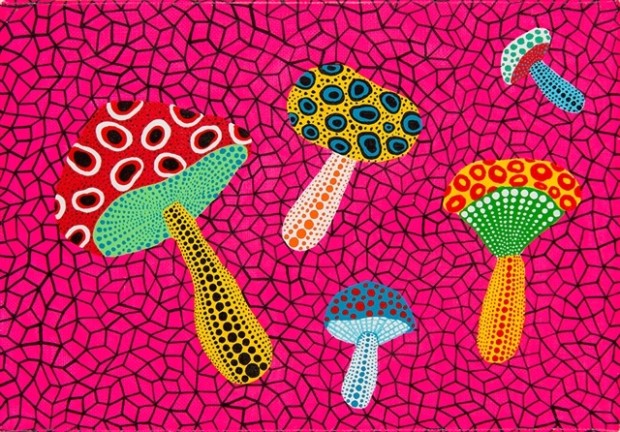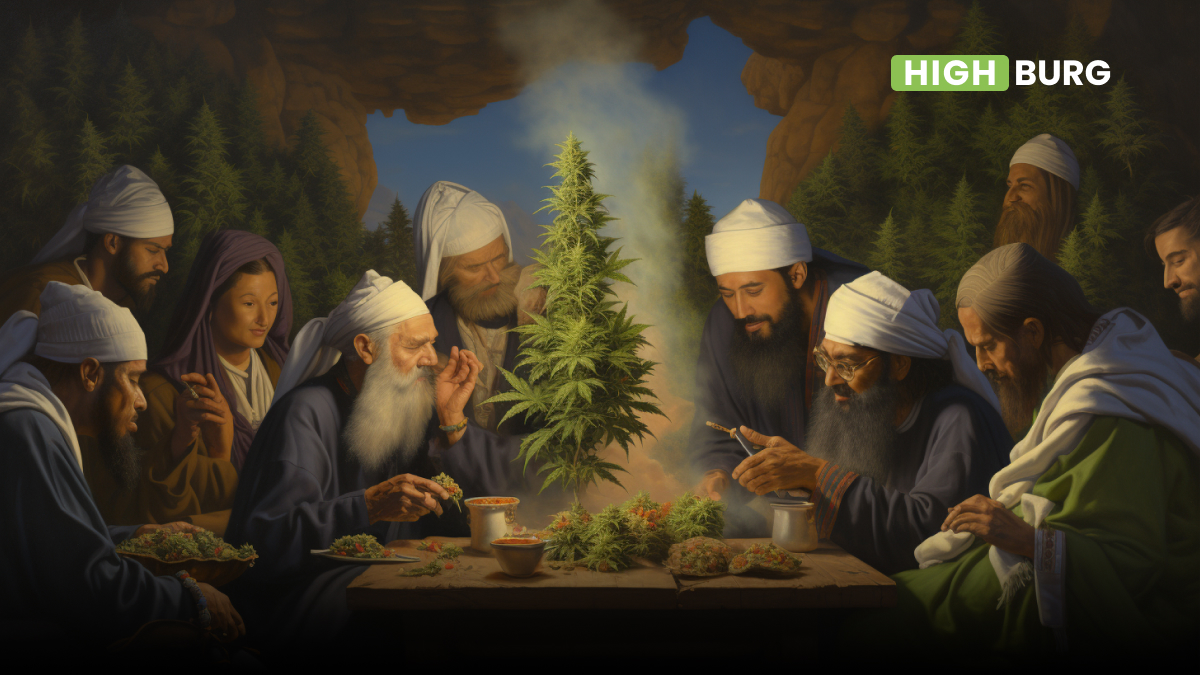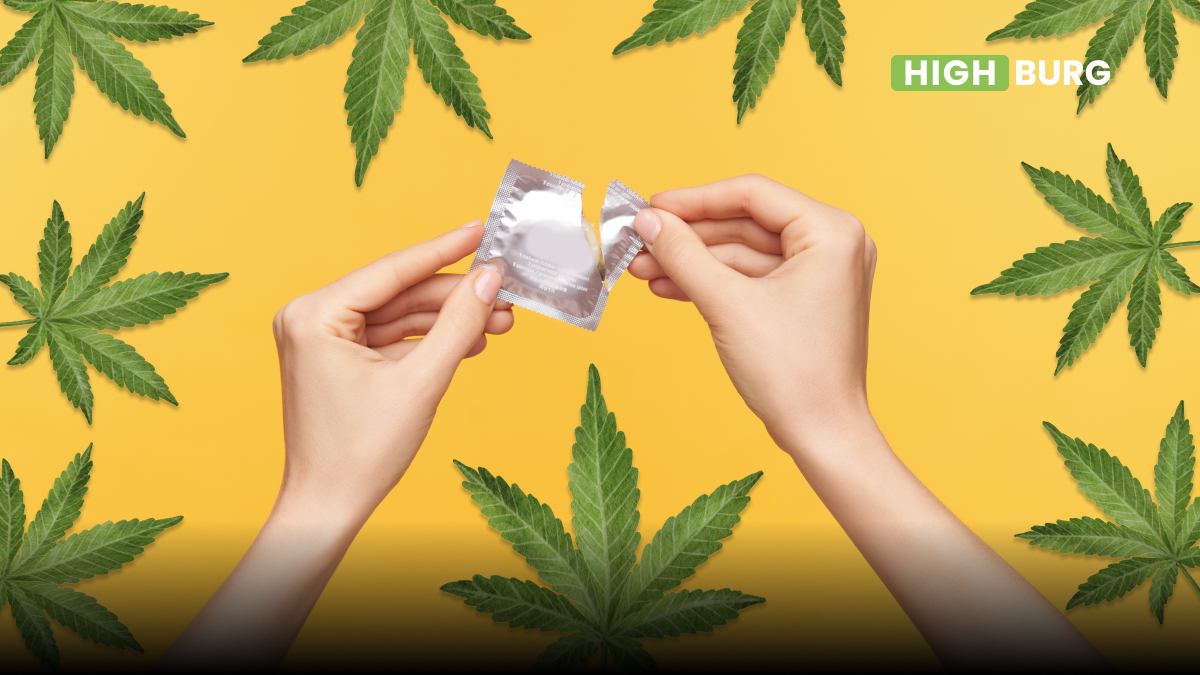Mushrooms and their effects have been reflected in the works of artists, musicians and writers for centuries. They hide on album covers, violate the rules of physics, walk on the ceiling, but one of the best things they do is affect the world of art and creativity.
The Mushroom Cult
The peak of the popularity of hallucinogenic mushrooms happened in the 1960s and 1970s, when America (and then in Europe) started massively consuming — The Magic Ones. This process was directly related to the hippie movement. They tried to resist the consumer society and devalued the capitalist system. Along with the fascination with Buddhist practices and other drugs, mushrooms have become the favorite mind-expanding practice for flower children.
That’s the “pop-culture” story as the majority of people know it.
The influence of mushrooms on culture began long (and even very long) before the 1960s.
The real history of Magic Mushrooms is best described in the publications of Robert Gordon Wasson (American writer and JP Morgan & Company Vice president). One of the deepest and most extensive research attempts on history of psychoactive substances started — as it always happens — by accident.
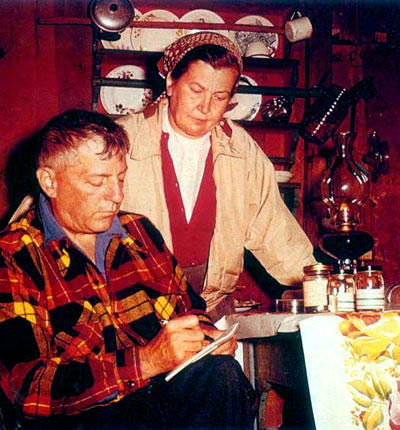
Photo of the Wassons by Allan Richardson, from R. George Wasson,
“Seeking the magic mushroom,” Life 49 no.19 (1957): 100–102, 109–120.
During their honeymoon in the Appalacian mountains, Robert’s wife Valentina found mushrooms similar to those that grew in her homeland, in Russia. The couple talked about the differences in their cultural backgrounds and the approach to shrooms (Valentina wanted to eat the thing, but Robert had other plans and refused). Deep in the discussion, they decided to devote some time to the research.
It was the beginning of years and years of in-depth examination of the mystical properties of mushrooms and their use by different people of the world in ritual practices. The couple worked at the intersection of history, linguistics, mythology, religious studies — and called the field ethnomycology. They conducted field research in Mexico and proved that the cult of sacred mushrooms has existed for at least a millennium.
According to Mr. Wasson and his wife, the history of Magic Shrooms goes back down to the Aztecs: mushrooms had a special meaning and were consumed in impressive quantities. One of the oldest mentions dates back to the 1579 document Relation de las Minas de Temascaltepec.
Wasson’s book notes that the pagans paid tribute to the ruler of Mexico with very non-trivial things — hemp blankets or mushrooms, which people used to “get drunk”.
Both on The Wall and On The Floor
You can’t escape the Magic Shrooms in art if you pay enough attention. One of the most striking examples — and this applies to color — is the work Yayoi Kusama.
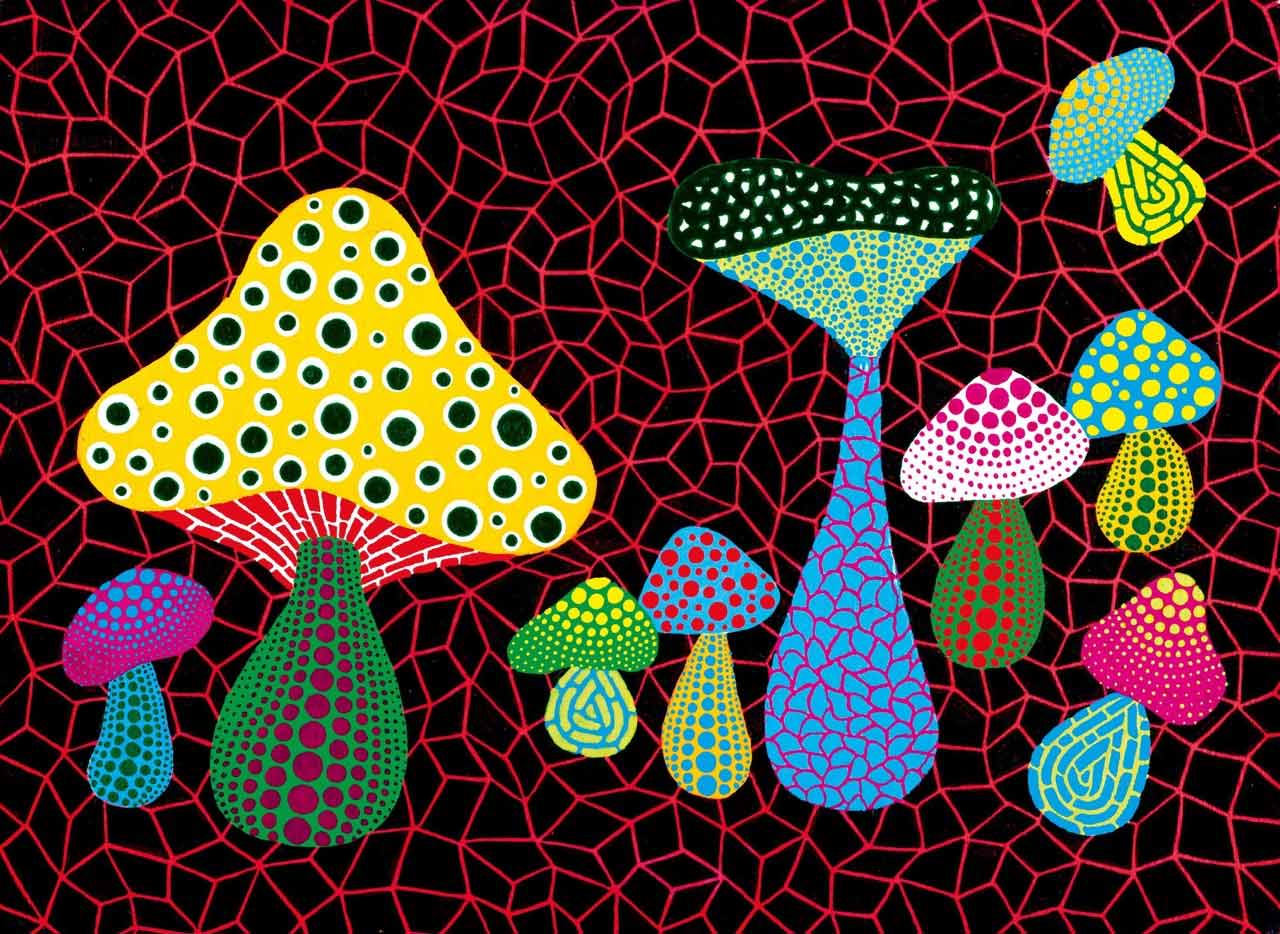
Yayoi Kusama, Mushrooms, 2005. Courtesy of Mucciaccia Gallery
The avant-garde artist made herself known in New York in the 1960s with her provocative happenings and hallucinatory paintings, which, even without images of fly agarics, surprise with LSD patterns.
Loops, dots, waves and an explosion of colors create an individual style for Yayoi Kusama.
She depicted mushrooms several times within a decade. The concept of the work has not changed in the idea, some objects have remained in place, and the cubes in the background created a visual illusion, typical for the works of psychedelic artists. Later, though, the colors turned darker, and the number of mushrooms increased.
Another example is the work of Seana Gavin, a masterful artist based in London. She, like a professional surgeon, cuts out photographs, archival materials and transforms them into fantastic compositions.

‘Mushrooms’ by Seana Gavin
Shrooms appear in the mountain landscape in the form of roofs of elongated houses. Sometimes they turn to life — hug, feel sad or fall asleep, suddenly get eyes or thin and tender female hands. Sometimes they become a decoration of the urban landscape.
Shrooms are The Big Thing in art, and some artists take the “Big” part literally. Carsten Höller created a series of works called The Giant Sculptured Mushrooms. Most often, they imagine spatial works that directly refer to the hallucinogenic mushroom Fly Agaric (Amanita muscaria).

Carsten Höller: Upside-Down-Mushroom-Room, Courtesy Fondazione Prada Photo Attilio Maranzano
In general, they repeat the shape, colors and other visual parts of the reference mushrooms. At the same time, they have superpowers — they can fly, rotate and optically distort space. For some of these mushrooms become a subject of excitement or concern, yet by doing so they achieve the goal of showing the effect of psychotropic mushrooms in real life.
Artificial Paradise
There are some pretty funny cases too. For example, the French poet Charles Baudelaire, famous for his poetry collection “The Flowers of Evil”, wrote another interesting book called Artificial Paradise. Three works were published under this title – “Wine and Hashish”, “Poem of Hashish” and “Opiomaniac”.
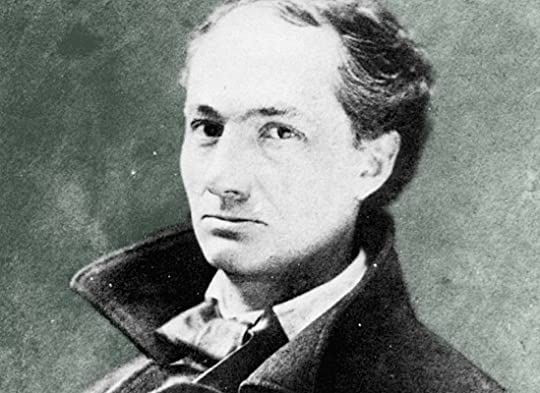
Charles Pierre Baudelaire
All of them described the effects of hashish and opium on a person and a creative person, in particular, Charles himself. True, the connection with mushrooms is manifested only in the fact that now this expression is applied to any drugs and most often to hallucinogens. It reflects a life with a sense of risk, instability and is a major part of decadence.
Lewis Carroll portrayed the famous caterpillar that Alice met on a mushroom (and, by the way, smoking a hookah). Then she got off the hat and explained that one side of the Fly Agaric would make it taller, and the other — lower.

The Caterpillar. John Tenniel’s illustration from the first edition of Alice’s Adventures in Wonderland (1865)
So Lewis Carroll, with a simple illustration, spoke about the effects of mushrooms and what effects they can cause. For example, reducing or increasing objects’ size in the eyes of a person.
Mushrooms with… Mushrooms
There are also Fly Agaric lovers in music. An example is the Israeli band “Infected Mushroom”, which creates psychedelic trance and electronic rock. They released several albums that featured mushrooms on their covers. In the year 2000, the album Classical Mushroom was released, which became the newest of the group’s most famous albums, as well as one of the most famous albums in this genre. The track “Bust a Move” from this list is called by many the most interesting track of the group.
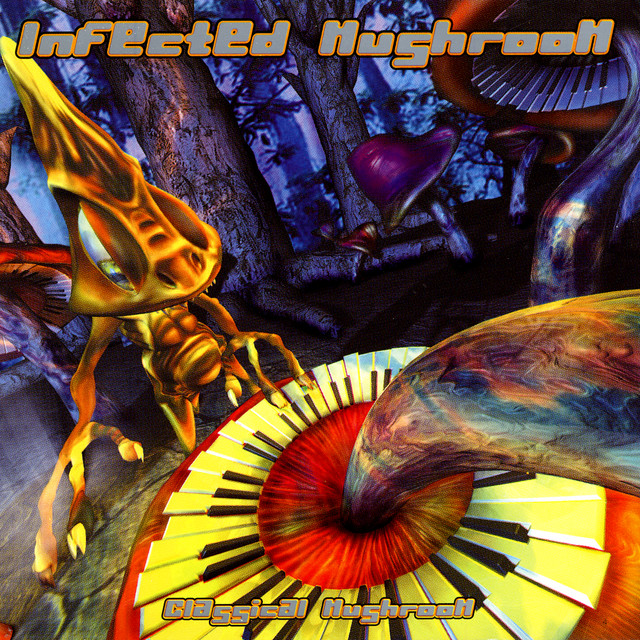
Infected Mushroom – Classical Mushroom — artwork by Tzahi Keshet
Another album — IM the Supervisor — was a kind of opposition to all previous work. Many criticized the album as being too commercial, but it sold well. One thing remained stable — the image of mushrooms on album covers.
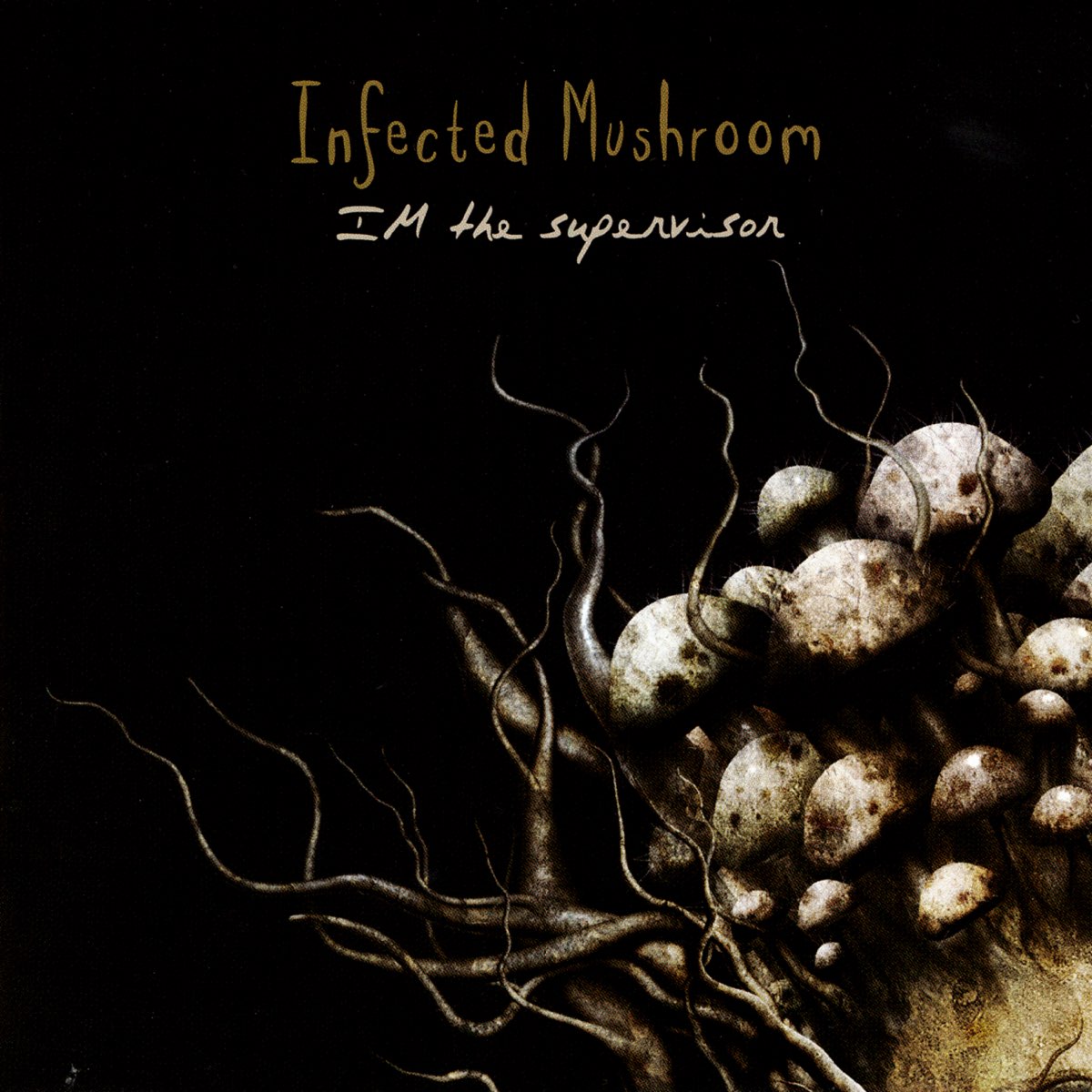
Infected Mushroom — IM The Supervisor — artwork by David Ho, UziGraphics
The popularity of mushrooms in music culture is also confirmed by YouTube videos, which feature a three-hour video for the mushroom trip with almost a million views. In addition to listening, you can also be inspired by touching reviews, for example:
“I’m a father of two beautiful boys and I have a beautiful wife but alcohol has been tearing us apart so i decided to do mushrooms and idk how beer is legal but these aren’t. I never want to drink again. This is such a beautiful experience”.
